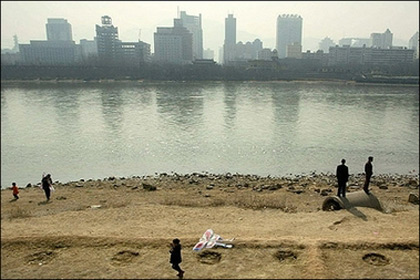China's Yellow River running low
(Agencies)Updated: 2007-03-12 10:12
Unseasonably warm weather in northern China has led to parts of the Yellow River, the nation's second-longest waterway, drying up, the China News Service reported Sunday.
High temperatures this winter, a lack of rain fall in the upper reaches and rising industrial and agricultural water use has resulted in low water levels in the river at Lanzhou city, capital of Gansu province, the China News Service said.
"At present a tight shortage of water on the Yellow River is worsening, and water levels in reservoirs in the upper reaches are falling," the report said.
Parts of the river that runs through Lanzhou have dried up with sand banks appearing in the middle of the river channel, stranding boats, the Lanzhou Morning Press reported.
The low water levels come as the government seeks to control the flow of the river during the ongoing dry season to safeguard water supply for cities and hydro-electric dams in the river's middle reaches, the paper said.
Currently the water flow at the Lanzhou monitoring station is about 370 cubic metres (481 cubic yards) per second, which represents the river's lowest flow of the year.
During the high water season in May, water flows are over three times as high with an average of about 1,100 cubic metres per second, it said.
The 5,460 kilometre (3,380 mile) long river, China's "Mother River," winds from the Tibetan plateau in northwest China to the Bohai Sea in the east, providing water for some 140 million people.
In the mid-1990s, the river repeatedly dried up in the lower reaches, prompting the government to adjust water use and reservoir storage limits along its entire length.
|
||
|
||
|
|

